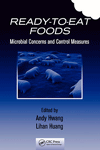R&D Seminar: Formulation Information -- August 2008

Attendees of Prepared Foods’ R&D Seminar series heard about ethnic trends in America, specifically about Hispanic, Indian and Asian foods. They also learned how hydrocolloids affect taste, aroma, mouthfeel and texture in food and beverage systems, and how certain software can help with claims and costs.
Ethnic Food Trends
A population that is increasing in diversity and aging is shaping today’s U.S. food market. Health and wellness, as well as sophistication, are also factors. The U.S. Census Bureau reports 14 million Asian and 41.3 million Hispanic people in the U.S., and they have a major impact on American culture, including food. Aging Boomers have money and are willing to spend it. They like to eat out, and they like foods that are hot, spicy and bold. Tastes are sophisticated, requiring bold new flavors, complexity, culinary fusion and authenticity. In his presentation entitled, “Navigating, Creating and Capitalizing on Ethnic Food Trends,” James Duncan, of Vegetable Juices Inc., discussed the topic of ethnic trends in America.
Asian and Hispanic foods are hot culinary trends. Mexican food is on the upswing in fast food, casual restaurants and fine dining. Americans are enthusiastically embracing a wide range of new tastes and flavors, as Latin foods make further inroads into mainstream shopping and dining. In retail, ethnic foods account for 12% of all retail food sales, and that is increasing every year. Of that, 42% is Hispanic-influenced.
Americans' enchantment with Latin food appears to be growing, in good part because of the explosion of new tastes, ingredients and combinations. As tacos, burritos, enchiladas, quesadillas and taquitos have gone largely mainstream in supermarket freezer cases, other items, like empanadas, plantains, sofrito, Caribbean barbecue and the açai berry from the Brazilian rain forest, are taking center stage.
Southeast Asia is a cook’s paradise and an eater’s, as well. The food of any region is not only the result of what the ground and climate will produce, but also of who has been there, what powers have influenced it, how poor or wealthy the people are and what its sensibilities prefer. The major influences on Southeast Asian cuisines have been exerted by China from the east (the wok, noodles) and India (curries) from the west. As in Chinese cuisine, the cook strives for a harmonious balance of textures, temperatures and flavors: sweet, sour, salty, bitter.
Creating quality ethnic products often requires whole, natural foods, authentic fresh flavors, functionality, clean labels, convenience, superior color and body, and high quality. The company supplies authentic products, including juices, purees, dices, blends, sauces and dehydrates, that can help achieve those goals. They employ innovative, market-driven applications; new processes; new ingredients; new proprietary blends; and emerging trends and technologies.
In conclusion, Duncan said, purchasing pre-blends often results in labor savings, reduced equipment, less research time, consistent product and guaranteed quality.
“Navigating, Creating and Capitalizing on Ethnic Food Trends,” James Duncan, Vegetable Juices Inc., Duncan@vegetablejuices.com, www.vegetablejuices.com
—Summary by Elizabeth Mannie, Contributing Editor
Hydrocolloids and Sensory Qualities
Many times, the first thing that comes to mind upon hearing the word “hydrocolloid” is “stabilizer.” In reality, hydrocolloids can do much more in food and beverage systems. Hydrocolloids can affect taste, aroma, mouthfeel and texture. Varying the type and amount of gum used in a system can affect sensory perception, explained Ross Clark, distinguished research fellow, CP Kelco, during a presentation titled, “Customizing Sensory Attributes via Hydrocolloids.”
CP Kelco funded research, conducted by the Tragon Corporation, on beverage systems formulated with different gums. The objective of the investigation was to determine how different gums would perform in certain beverage systems. The work incorporated controls with no gum system and then tested variants of 16 different gums systems. The gums that were utilized in the study were selected to provide a wide range of properties. The controls were formulated with sugar and a non-nutritive sweetener.
Among the gel systems used in the study were the proprietary pectin, xanthan gum, gellan gum and cellulose gum families of products. The studies showed that the type of gel system had little effect on aroma, flavor and aftertaste of the products. In other words, there was no statistical difference between gum systems utilized in the study. However, the type of gum that was used had the greatest effect on mouthfeel. Cellulose gum was found to be the most thick and syrupy, whereas the controls and low viscosity gums, such as xanthan gum, were very thin.
The scientists doing the research utilized several tools, including the electronic nose and tongue. Additionally, rheological data was gathered using Coulette for shear analysis; dynamic oscillatory analysis utilized capillary and density analysis. All data was subject to statistical analyses. The electronic tongue showed very good correlation with sharp flavors, and density measurements were able to detect small differences in gum concentrations.
The Tragon work demonstrated that the choice of hydrocolloid would influence mouthfeel more than taste or aroma. The work also concluded that the term “flavor release” has limited value, given that flavor is so complex. It is also possible to utilize the electronic nose and tongue to correlate flavor, aroma and aftertaste. Researchers can also employ density measurements to determine gum concentrations, even at very low levels--that is, less than 0.1%.
“Customizing Sensory Attributes of Hydrocolloids,” Ross Clark, distinguished research fellow, CP Kelco, ross.clark@cpkelco.com, 858-467-6638, www.cpkelco.com. For further information, contact Jane Schulenburg at 678-247-7413 or jane.schulenburg@cpkelco.com.
—Summary by Richard F. Stier, Contributing Editor
Software Helps with Regulatory Compliance
There is no internationally agreed-upon definition of functional food, and most countries have no legal definition. The lack of clear regulation and definition of functional food, and non-harmonized procedures, is a hindrance to the growth of this segment. Because of this, the food industry is unable to take full advantage of a potential growth segment in the mature food market. However, there is software that can help, stated Sunil Thomas, vice president of sales, Selerant Corp., in a presentation titled, “Regulatory Compliance Boundaries.”
Demand for functional food is expected to increase dramatically in the coming years, driven by scientific and technical developments and consumers’ interest in innovative products for health and well-being. Globally, functional foods sales are projected to grow from $75 billion in 2007 to $109 billion by 2010. Functional beverages, the fastest-growing global segment, will top $34 billion by 2010.
In order to leverage nutritional boundaries for innovative wellness products, it is important to manage the regulatory landscape. This includes managing ingredient information, product requirements, labeling and compliance regulations.
Regulatory software that can provide assistance includes a series of stages to help during product definition, design, optimization, scale-up and maintenance. The software assists during product definition in identifying markets, guidelines and generating preliminary nutritional profiles, while considering requirements for vegan, organic and other claims.
During development, formulas, ingredients and non-compliances are maintained, viewed and summarized. While optimizing, formulas can be run against preliminary requirements, alternate formulas created for different markets and the lowest-cost formulas identified within compliance boundaries.
Labeling information, including nutritional, allergen and dietary information, is handled and guidelines maintained. “What if” situations also can be simulated. Regulations for a number of situations and countries can be accessed.
“Regulatory Compliance Boundaries,” Sunil Thomas, vice president of sales, Selerant Corporation USA, sunil.thomas@selerant.com, www.selerant.com
—Summary by Elizabeth Mannie, Contributing Editor
Optimizing Formulas and Nutrition Labeling
Global food manufacturers can utilize formulation and optimization software to reduce product waste. Software can be used for management of product data, formulas/recipes, specifications, collaborative tools, projects and workflow, packaging, regulatory/labeling and portfolios/ideas, stated Carlo Colombo, CEO, Selerant Corp., in a presentation titled, “Formula Optimization and Nutrition Labeling.”
In one example, a global nutrient food manufacturer of infant and baby food, food for special diets, performance sports, hydration and other functional foods, and nutraceuticals, is in a very sensitive position, due to the nature of the claims being made on its products. The risk with a non-compliant product on the market is the liability of the law, fines and penalties, as well as the loss of consumer trust and market share. On the other hand, there is also a high cost in wasting out-of spec product.
Currently, the typical new product development process is laden with waste of non-compliant production. The challenge lies in very narrow production specification tolerances, but high variability in raw materials. Often, the same product can have varying nutritional values in different markets because of production issues.
Here is where it is important to identify targets, the desired ingredient statement or nutrition label, because they affect the other characteristics of the product including cost, waste and marketability. These targets often are flexible during early design, but become very rigid once the product is finalized. The software helps develop, manage and maintain all areas of development, through formulation, specifications and labeling regulations.
Regulations differ by country and industry, and companies may have their own nutritional and regulatory practices. Specifications can be created by selecting the countries, categories and guidelines included in the software. Production variability is maintained, as it can strongly affect the ability to meet targets. Non-compliances are analyzed, and final ingredients are chosen. The optimization of the formula for the reduction of cost must consider the expense of non-conformity waste. For this reason, the formula that minimizes the overall lowest cost for the manufacture of an item is a trade-off solution between the risk of non-conformity and the minimization of the cost of ingredients.
“Formula Optimization and Nutrition Labeling,” Carlo Colombo, CEO, Selerant Corp., carlo.colombo@selerant.com, www.selerant.com
—Summary by Elizabeth Mannie, Contributing Editor
Looking for a reprint of this article?
From high-res PDFs to custom plaques, order your copy today!





